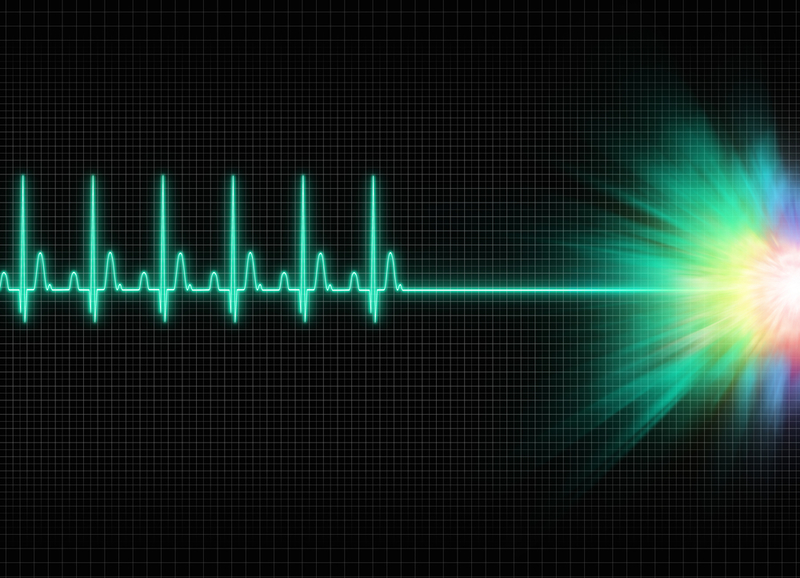One in 10 people have 'near-death' experiences, according to new study
MedicalXpress Breaking News-and-Events Jul 03, 2019
Mystical near-death experiences where people report a range of spiritual and physical symptoms, including out-of-body sensations, seeing or hearing hallucinations, racing thoughts, and time distortion, affect around 10% of people, according to a new study that analyzed participants from 35 countries.

These near-death experiences (NDEs) are equally as common in people who are not in imminent danger of death as in those who have experienced truly life-threatening situations such as heart attacks, car crashes, near drowning, or combat situations.
The new findings were presented at the 5th European Academy of Neurology (EAN) Congress by researchers from the Rigshospitalet, Copenhagen University Hospital, University of Copenhagen, Denmark; the Center for Stroke Research, Berlin; and the Norwegian University of Technology, Trondheim, Norway.
Experiences most frequently reported by participants in their study included: abnormal time perception (87%), exceptional speed of thought (65%), exceptionally vivid senses (63%), and feeling separated from or out of their body (53%).
The study group who reported NDEs variously described feeling at total peace, having their 'soul sucked out', hearing angels singing, being aware they were outside their body, seeing their life flashing before them, and being in a dark tunnel before reaching a bright light. Others spoke of being aware of another's presence before they went to sleep, or of a demon sitting on their chest while they lay paralyzed unable to move.
The team recruited 1,034 lay people from 35 countries via a crowdsourcing platform online (to eliminate selection bias) and asked them if they'd ever had an NDE. If they answered yes, they were asked for more details, using a detailed questionnaire assessment tool called the Greyson Near-Death Experience Scale, which asks about 16 specific symptoms.
A total of 289 people reported an NDE, and 106 of those reached a threshold of 7 on the Greyson NDE Scale, (which confirms a true NDE). Some 55% perceived the NDE as truly life-threatening and 45% as not truly life-threatening.
Far from being a pleasant experience associated with feelings of peacefulness and well-being, as some previous studies have reported, the new study found a much higher rate of people reporting their NDE as unpleasant. Overall, of all the people who claimed an NDE, 73% said it was unpleasant and only 27% said it was pleasant. However, in those with a score of 7 or above on the Greyson NDE Scale (a confirmed NDE), this changed to 53% reporting a pleasant experience and 14% an unpleasant one.
Based on insight gained from previous studies, the researchers found an association between NDEs and rapid eye movement (REM) sleep intrusion into wakefulness. REM sleep is a phase of the sleep cycle where the eyes move rapidly, the brain is as active as when someone is awake, dreaming is more vivid, and most people experience a state of temporary paralysis, as the brain sends a signal to the spinal cord to stop the arms and legs from moving. When REM sleep intrudes into wakefulness, some people report visual and auditory hallucinations and other symptoms such as sleep paralysis, where they feel conscious but cannot move.
REM sleep intrusion on wakefulness was found to be more common in people with scores of 7 or above on the Greyson NDE Scale (47%) than in people with scores of 6 or below (26%), or in those below the threshold with no such experiences (14%).
Lead researcher Dr. Daniel Kondziella, a neurologist at the University of Copenhagen, said, "Our central finding is that we confirmed the association of near-death experiences with REM sleep intrusion. Although association is not causality, identifying the physiological mechanisms behind REM sleep intrusion into wakefulness might advance our understanding of near-death experiences."
Dr. Kondziella said that the 10% prevalence figure of NDE was higher than in previous studies conducted in Australia (8%) and Germany (4%). He said this could be explained by the fact they had been conducted on cardiac arrest survivors rather than unprimed lay people, as in this study.
Dr. Kondziella said the study replicated the findings of an earlier study by Nelson, et al in 2006 that had been criticized for selectional bias, but the new study addressed those potential flaws by recruiting via a crowdsourcing platform.
-
Exclusive Write-ups & Webinars by KOLs
-
Daily Quiz by specialty
-
Paid Market Research Surveys
-
Case discussions, News & Journals' summaries
